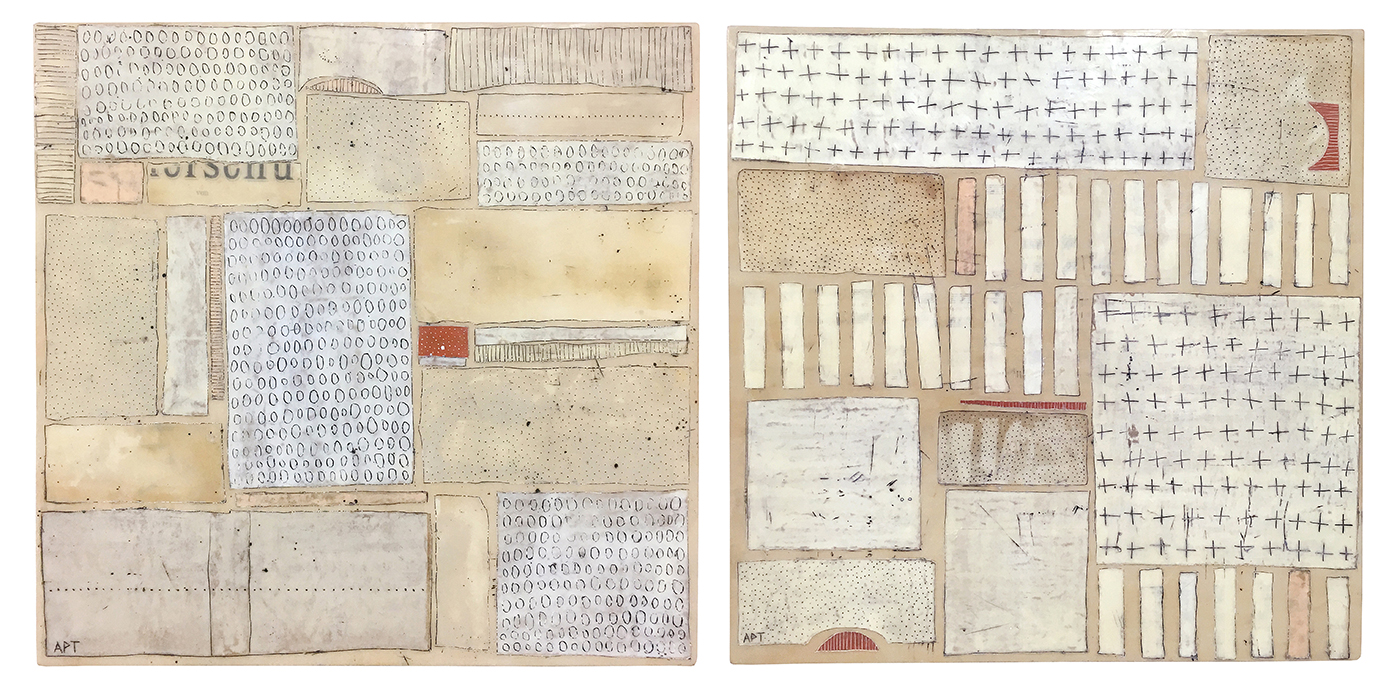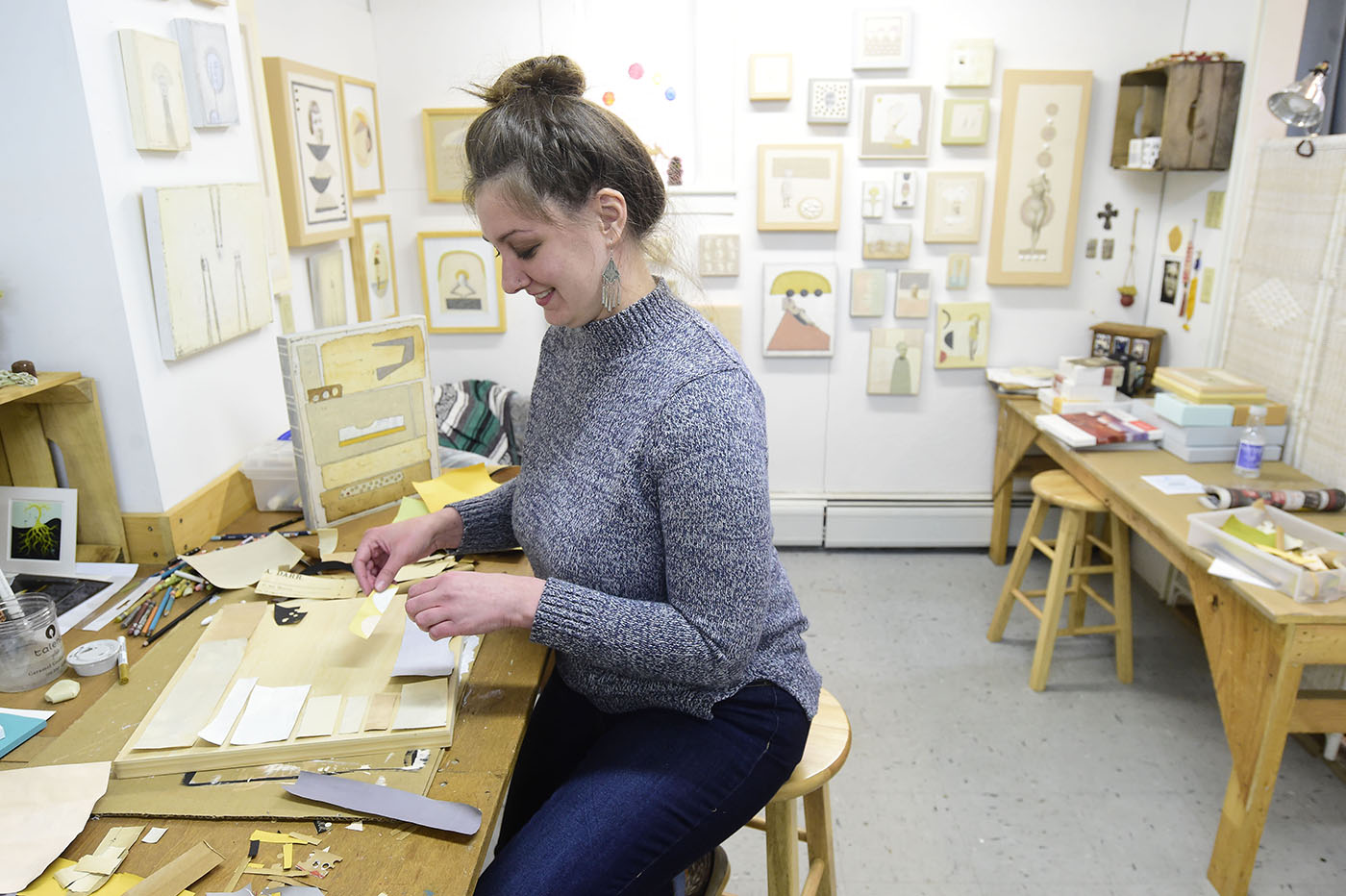Contemporary artist Athena Petra Tasiopoulos take us through the process of using vintage materials and different mediums to create her unique body of work as a mixed media collage artist.
I love the idea of simultaneously honoring the past while transforming it into something that is relevant to contemporary society.

Take us to the beginning of your story. How did your tryst with art begin?
I’ve been obsessed with creating since I was a child. I studied art in college – my concentration was photography. Although I love the photographic medium, just making “straight photos” wasn’t enough for me. I wanted more of a hands-on approach, a slower more meditative process. A lot of my early work was created in the studio where I photographed various props that I would then digitally composite together to create a digital illustration. Eventually, I began to shift away from photography and started using found materials for my collage for a more analog approach. I apply beeswax onto my collages to create textural surfaces. This led me to start thinking more about the artwork as an object rather than simply a two dimensional image that was to be matted and framed behind glass.

What is the primary role of an artist?
I believe the role of the artist is to start a conversation – to create prompts for self examination and reflection. We should pose questions rather than answer them. The art-object connects artist and viewer in a very intimate way – allowing us to celebrate our shared human experience and embrace the fact that multiple truths can exist simultaneously.
How do you deal with the conceptual difficulty and uncertainty of creating work?
I’ve realized I can’t force creativity. If I’m trying too hard or feeling too self-aware my work feels contrived. I’ve found it best to just experiment through trial and error until a composition “clicks”. In this way, I feel like I’m always learning the importance of being open and constantly listening. It teaches me to be patient and work through my creative blocks knowing eventually I’ll figure out the puzzle. When a composition does feel successful, I examine the reasons why so I can learn from them and be more productive in the future. This practice, this push and pull between intuition and reasoning, helps me find balance in life – not just in the studio.

Let’s talk about the evolution of your practice over the years.
My practice has evolved quite a bit throughout the years – from working with different media (paper, encaustic, textiles, etc) to working with different subject matter (figurative vs abstract). However, I’ve come to realize that everything is connected. Everything you make informs the next thing you will make. Even when a piece is a failure, it serves as a learning experience that informs what you should (or shouldn’t) do next.

Let’s talk about your references and process. What inspires you?
I’m inspired by old things. I use a lot of vintage portraiture photography in my collage work. The idea of simultaneously honoring the past while transforming it into something that is relevant to contemporary society appeals to me. I also use a lot of recycled and found vintage papers, love thinking about the vulnerability of materiality and the imperfections of the human hand. I believe there is beauty to be found in the mundane – and if we can recognize that beauty, we will be much more content with our day to day living.

Who are your maestros? Whose journey would you want to read about?
I’m very intrigued by “outsider artists” and self-taught creatives who are not participating in the formal art world. Henry Darger is a favorite of mine. It’s amazing to read about all the work he created in private – undiscovered until after his death. The need to create is so uniquely human. There’s something so pure, almost spiritual, about individuals who pursue that passion privately without the need for external approval or gratification of the ego.

How do you balance art and life?
I have a day job and also do a lot of freelance design and consulting work for other creatives. My art-making practice helps me find balance in my life. It allows me to check back in with myself, slow down and be present.
The Duality. Artists often experience contradicting motivations. How do you strike a balance?
I think the most important thing an artist can do is to find one’s voice and stay true to it.
I try not to let myself be too concerned with the commercial side of things when I’m working in my studio. Thinking about what will sell can cause me to second guess myself and usually ends with me in a creative block. I try to trust my instincts even if I’m working on a piece for a client. Ideally, if someone has assigned you a commission, it’s because they already believe in your vision. Do your best to honor their needs while staying true to what comes naturally to you as an artist.

How does your interaction with a curator or gallery evolve from the (brief) initial interface, to the working-involvement-relationship?
It’s so important to find the right gallery – a curator that understands your strengths as an artist and knows how to pair your artwork with other artists so that an exhibition feels balanced and complementary. Find a curator who will represent you as you want to be presented to the world. Things like good graphic design and web presence are incredibly important as the platform for art-viewing continues to evolve and become more computer-based. As with any relationship, it takes trust, good communication, and a shared vision for the gallery-artist partnership to grow successfully.

Contemporary artist Athena Petra Tasiopoulos. Artist in studio.
Are you more of a studio artist or naturally collaborative by nature? How do you feel about commissions?
I am definitely more of a solo studio artist. I think of my practice as something of a meditation. It feels very private and personal. That said, if it’s the right project, collaborative and commissioned work can be a fantastic opportunity for personal growth and inspiration.

What are you working on now? What’s coming next season?
Recently I’ve been experimenting with three-dimensional and sculptural collage work. I’ve always been a 2-D artist – so it’s been exciting to see this new work take form (literally). This new body of work has presented a lot of interesting challenges and I’m eager to continue to learn and grow and see how the work continues to evolve.
Before you go – you might like to browse our Artist Interviews. Interviews of artists and outliers on how to be an artist. Contemporary artists on the source of their creative inspiration.











Add Comment